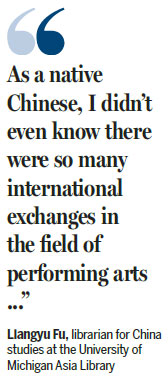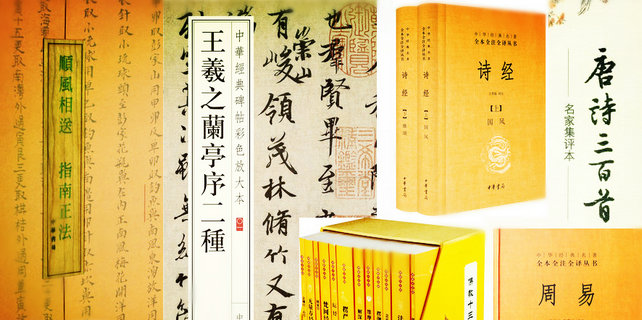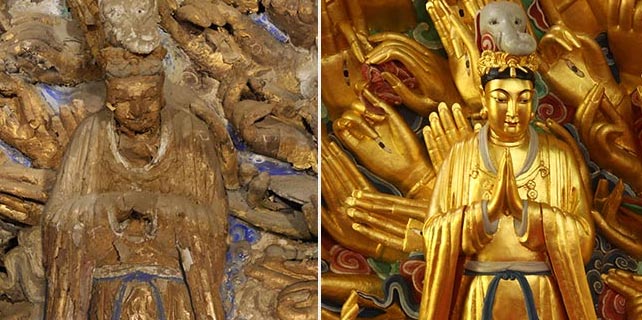Chinese dance history on show in Chicago, tells different collection story
The ongoing exhibition on Chinese dance history at the University of Michigan (UM) in the midwest U.S. city of Chicago not only illustrates postwar Chinese dancing, but also tells a different collection story.
The show, held at the UM Hatcher Graduate Library, draws from a wealth in the UM Chinese dance collection, which owes most to a Chinese dance researcher, and a librarian who is meanwhile a performing arts fan.
While the show Chinese Dance: National Movements in a Revolutionary Age, 1945-1965 presents China's dance culture and history in that specific time frame, the exhibits - photos, periodicals, books, performance programs, postcards and mimeographs, among others, mark an intensive and joint efforts over more than three years by Emily Wilcox and Liangyu Fu.
Wilcox, a UM assistant professor, is one of the researchers in the field of Chinese dance studies based in the United States. Over the past decade, She traveled to China for 11 times, visiting Chinese artists' homes, scanning 1,500 rare photos, and recording 300-hour-long interviews with Chinese dancers and choreographers.
It was a lunch chat in the fall of 2013 that gave the origin of the UM Chinese dance collection.
Fu proposed that they work together to create a Chinese dance collection in the library during the meal she invited Wilcox for.
Being then a newly come librarian for China studies, Fu was keen to add a distinction to the collections at the UM Asia Library. As a performing arts fan and someone fascinated by preserving ephemeral materials, Fu was thrilled to learn that Chinese dance is an emerging area for studies.
What's more, the area combines her personal interest with Wilcox's research.

At the same time, being a dancer herself, Wilcox was overjoyed with the idea of having a permanent home for the research materials she had collected for years.
Thanks to their joint efforts, the UM Chinese dance collection now archives more than 1,500 photos scanned from personal collections of leading Chinese dancers in the 1940s, the 1950s and the 1960s, as well as more than 1,000 books, periodicals, photo albums, performance programs, postcards, mimeographs and manuscripts related to Chinese dance during those times.
None of the individual dancers and choreographers Wilcox has selected for the archive hasn't had an impact on the history of Chinese dance. Prior to the creation of the UM collection, there was no well-documented history of their artistic careers in English.
According to her, a feeling of urgency prompted Wilcox to work to preserve as soon as possible their memories, as the Chinese artists were mostly in their seventies or eighties, and some passed away.
The eldest Chinese dancer Wilcox interviewed for the archive is Sheng Jie. Wilcox said that although Sheng was over 90 of age, she could still recall vividly her dancing performances during World War II, which would often be disrupted by Japanese bombings.
Shu Qiao, who played the role of the female heroine in famous dance drama Dagger Society in 1959, impressed Wilcox most.
Shu is also one of the first prominent female choreographers of the Chinese classical and contemporary dance drama.
"I really enjoyed meeting Shu Qiao in person, I went to her apartment in Shanghai couple (of) years ago. I was just so shocked because she was already in her eighties, she just looked like a young person. She smoked all the time. She lived alone. She cracked jokes. She has a great personality," Wilcox told Xinhua.
"We had a really fun time talking all the afternoon in her apartment," she said.
On her part, Fu has amassed more than 1,000 items for the UM Chinese dance collection.
One of the interesting parts of the collection, Fu said, is that many things evidenced cultural exchanges between China and the rest of world in the 1950s and the 1960s, times that many people regard as a seclusive period for China.
"As a native Chinese, I didn't even know there were so many international exchanges in the field of performing arts (during that period) until I started collecting the performance programs," Fu told Xinhua. "They challenged a stereotypical view on that time period."
The performance program display at the current UM show unveils that between 1949 and 1965, state-sponsored Chinese dance delegations visited 53 countries, ranging from Hungary, Poland and Syria to Ghana, Colombia and Brazil. And vintage postcards in the 1950s and 1960s show trips of dance troupes from such countries as Yugoslavia and Britain to China.
Xiaobing Tang, a UM professor of modern Chinese studies, deemed the UM Chinese dance collection as invaluable resources for those who are interested in Chinese culture or dance and performance arts, for academic purposes or not.
Whatsoever, it is now the dream of both Wilcox and Fu to make the collection a world-class one.
Xinhua
(China Daily 04/22/2017 page18)
















